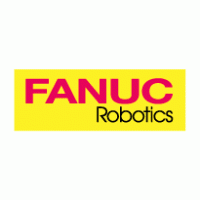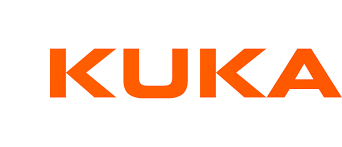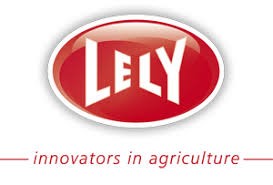Synthèse
The global robotics market, which can be classified into industrial robotics and service robotics, has been growing rapidly, with distinct characteristics. In 2020, the Asia-Pacific region will dominate the market with a 53.8% share, with Europe and the Americas lagging behind but experiencing growth. The French market ranks third in Europe for industrial robot sales.
However, the Covid-19 crisis has led to a 26% drop in industrial robot sales in 2020 in sectors such as automotive and electrical/electronics, which are traditionally the most demanding. In contrast, sales of professional service robots rose by 12% worldwide, while personal service robots grew by 16%, driven by the domestic sector and reflecting important demographic changes such as the aging of the population. In addition, the direction of industry is being shaped by technological advances leading to Industry 4.0, and in France there is a drive to invest 800 million euros to support robotics incorporating artificial intelligence, aiming for reindustrialization by 2030.
The French robotics market: trends in an evolving industry
In recent years, the robotics industry in France has experienced strong growth, becoming Europe's third-largest market for industrial robot sales, behind Italy and Germany. The French market, while not as large as that of Asian countries, is growing steadily. For example, the stock of industrial robots in France grew by a remarkable 10% to between 40,000 and 45,000 units, while sales rose by 15% to around 6,500 to 7,000 units. Annual installations of industrial robots grew by an impressive 18%.
On the other hand, the service robotics market, which covers both professional and personal use, was also dynamic. It's worth noting that the professional segment grew by 12% in 2020, with worldwide sales reaching around $6.5 to $7 billion for 130,000 to 133,000 units sold. Particularly striking is the leap in sales of autonomous mobile robots, which exceeded $1 billion in value, as well as the staggering 92% increase in sales of professional cleaning robots, with over 34,000 units sold in response to the growing needs of our customers.s sold in response to the growing need for hygiene following the avian flu epidemic.
Robotics for personal use, particularly in the consumer sector, grew by 16%, reaching a market size of around $4-4.5 billion. This segment is mainly driven by domestic robots for household tasks, which sold between 18 and 19 million units and generated sales of around $4.3 billion, indicating strong demand for consumer convenience and assistive technologies.
The growing trend towards automation and the gradual transformation to an Industry 4.0 paradigm are reinforcing the need for robots in a variety of sectors. From assembly and logistics to medical, agriculture and even domestic environments, robot adoption is flourishing. At the same time, the French landscape is dotted with agile start-ups, such as those producing companion robots for the elderly, indicating the growing penchant for integrating robotics into everyday life.
Given the impact of the avian flu pandemic, the robotics market has contracted, particularly in sectors such as the automotive industry, which traditionally accounts for a large share of robot demand. However, sectors such as logistics, medicine, chemicals, pharmaceuticals and agri-food have maintained or even increased their investment in robotics to meet the challenges posed by the pandemic.
The robotics market is vast and dynamic, with key players covering a wide range of applications, demonstrating the diverse potential and scope of robotics technology. These companies are more than just manufacturers; they symbolize the cutting edge of ingenuity and are redefining the boundaries of automation, healthcare, logistics and domestic assistance.
- ABB Robotics: Titan of industrial automation, ABB Robotics offers one of the most comprehensive ranges of robotic products and software in the industry. Renowned for its innovations in robotics, motion, automation technology and electrification, ABB Robotics is a global leader in power grids, electrification products, industrial automation, robotics and motion.
- Yaskawa: With its roots firmly planted in Japan, Yaskawa is a veteran of industrial robots and automation. Its expertise extends from drives and motion controllers to industrial robots that have been designed and deployed in numerous industries and applications around the world.
- Mitsubishi Electronics: An electronics giant, Mitsubishi Electronics has a substantial footprint in industrial robotics. The conglomerate's wide range of electronic and electrical products, not limited to robotics, underlines its impact and influence in the sector.
- FANUC: Synonymous with reliability and precision, FANUC has always been a leader in CNC systems, factory automation and robots. Its robots and cobots are used worldwide for complex and precise tasks, making the company a respected standard-bearer in the industry.
- KUKA: German engineering takes center stage with KUKA's range of industrial robots. KUKA is a major player with expertise ranging from small robotic arms to large units capable of lifting heavy loads. Its influence extends from the automotive sector to healthcare, a testament to its versatility and engineering excellence.
- Groupe SEPRO: Representing the prowess of French industrial robotics, Groupe SEPRO specializes in industrial robots and offers a range of products for the plastics industry. With an emphasis on innovation, its comprehensive range of robotic systems underlines its position as a major player in the industrial market.
- Siléane: Another French gem, Siléane is known for its robotic solutions and artificial intelligence systems for a variety of sectors. More than just a robotics company, Siléane paves the way for smarter, more adaptive robots, thanks to the integration of AI.
- Intuitive Surgical: Intuitive Surgical is a remarkable force in medical robotics. It manufactures the da Vinci Surgical System, a state-of-the-art medical imaging system
à la compréhension de ce marché
Détail du contenu
 Informations
Informations
- Nombre de pages : 30 pages
- Format : Version digitale et PDF
- Dernière mise à jour : 23/05/2023
 Sommaire et extraits
Sommaire et extraits
1 Market overview
1.1 Introduction and scope of study
Robotics markets can be traditionally subdivided into 2 main categories:
- industrial robotics, used to automate assembly or manufacturing tasks;
- service robotics, used both in professional environments (e.g. healthcare, agriculture) and for personal use (e.g. vacuum cleaners or hobby robots).
Both markets are growing fast, but have different characteristics. The first is essentially driven by demand from companies in 3 Asian countries, while the second market is more evenly distributed between countries. What's more, these two markets can be broken down into a multitude of different sub-sectors, with very different levels of maturity and customer segments. Robotisation is becoming increasingly important in the home automation, logistics, agriculture and medical sectors, for example. This wave of robotization is part of the broader development of Industry 4.0, which encompasses other advances such as Artificial Intelligence, Big Data and Machine Learning, all of which are driving the development of robots.
On a global scale, the International Federation of Robotics (IFR) is the sector's reference body. In France, several French nuggets stand out in the industrial and professional robotics segments, with highly advanced technology and solutions to specific needs.
1.2 Global market dominated by the Asia-Pacific region
Overall, the robotics market is expected to almost triple in size between **** and ****, rising from $**.* billion to $**.* billion over this period, representing a CAGR of +**.**%. This growth is mainly based on increasing demand for automation in various industries. Service robots in particular are expected to experience strong growth in the coming ...
1.3 Key figures for the French market
The French market is still a long way from the volumes seen in Asian countries, but nevertheless seems to have the wind in its sails. It represents the *e european market for industrial robot sales, behind Italy and Germany, according to iFR. In ****, the French industrial robot inventory grew by **% to ...
1.4 Consequences of Covid-19
the decline in robot sales in France in **** is a direct consequence of the general drop in investment in French industry, caused by the Covid-** crisis. Faced with the health crisis, French companies have reduced their margins by -**% in ****. This explains their reluctance to invest, resulting in a decline in ...
2 Demand analysis
2.1 Demand for industrial robotics
On the industrial market, France ranks *th worldwide and*rd in Europe behind Italy and Germany, in terms of operational robots, with *** robots per **,*** employees in **** [***].
Industrial robot sales volume France, ****-****, number of units Source: ****
After years of strong growth, robotics sales in industry declined by **% in ****. This downturn is ...
2.2 Professional service robotics, a dynamic segment
The market for professional service robots grew by **% in ****, with worldwide sales of $*.* billion and ***,*** units sold [***].
The IFR report also highlights several trends in this segment:
Sales of autonomous mobile robots(***) and delivery robots grew by **%, exceeding one billion dollars in value; Outdoor transport robots are becoming increasingly popular, as ...
2.3 Demand for service robotics for personal use
In ****, consumer service robots generated sales up **% on ****, reaching US$*.* billion . Most ofthese robots are focused on the domesticdomestic tasks**.* million units were sold in ****, representing sales of $*.* billion. These includecleaning robotsincludingvacuum cleanerswith sales of US$*.* billion. Thelawn-mowing robotsare expected to grow by more than **% a year over the next few ...
2.4 Towards Industry 4.0
Artificial Intelligence, the Internet of Things, Cloud Computing and Big Data technologies , and their complementarity, will be the main technologies driving Industry *.* and the transformation of production plants. They will also increase the capabilities and use cases of robots tenfold: equipped with sensors and intelligent systems capable of analyzing a large ...
2.5 The recent craze for cobots
Demand for cobots continues to grow, as this tool proves to be a central element of Industry *.*. What's more, cobots are taking advantage of the decline of traditional robots to win market share and establish themselves as the dynamic force to be rec koned with in the robotics market. Although the ...
3 Market structure
3.1 A fast-growing market, concentrated in certain countries
The industrial robotics market is booming. The number of industrial robots installed per year is set to jump by **% between **** and ****, from *** robots installed in **** to *** in ****.
evolution of industrial robot sales World, ****-****, in thousands of units Source: ****
the market is highly centralized. It is driven by a handful of ...
3.2 Some production considerations
Both industrial and service robots are made from the same materials, with a few exceptions. Steel, cast iron and aluminum are the main components used to build robot bases and arms, according to Madehowwhile rubber tires are the products usually used for mobile robots. Cylinders and other equipment used to move ...
3.3 Distribution
Sales of industrial robots and service robots for professional use are, by definition, aimed at companies, and therefore have a distribution network specific to a B*B market. As such, most robot manufacturers are vertically integrated vertically integrated, that is, they handle the entire value chain without intermediaries, from R&D ...
3.4 The value chain
The DGE has detailed the robotics value chain. In particular, it highlights the diversity of government intervention along the chain and in the market.
Source: ****
4 Offer analysis
4.1 Product classification
The typology of robotics products drawn up by the DGE highlights the types of market addressed by each segment: service robotics for personal use is a fairly mature mass market, which explains the low prices in this sector compared to others.finally, service robots for professionals are still in an experimental ...
4.2 Price trends
Robotics prices vary widely according to market segment, with very expensive industrial robots on the one hand, and low-cost, mass-market domestic robots on the other. Products in each segment also vary widely according to application, but all show the same trend: a general drop in selling price.
Prices in industrial ...
5 Regulations
5.1 Regulations still under construction
Some of the regulations governing industrial robots can be likened to those governing industrial machinery, as highlighted by the european Parliament Directive ****/**/EC.
Nevertheless, the regulations still have a long way to go to answer the ethical and philosophical questions raised by robots and artificial intelligence. In ****, according to l'Humanitérobots ...
5.2 Current ISO standards
ISO *****-part* (***) is still in gestation within the ad-hoc ISO working group. France, via its UNM**- Robots Industriels standardization committee, has requested that the official release be no later than mid-**** [***].
During this transitional period, the French UNM** commission decided to revise the French standard NF E**-*** (***).
These changes ...
6 Positioning the players
6.1 Player segmentation
The robotics market in France is made up of different players depending on the application: while the industrial market is dominated by foreign giants, French players are well positioned in the service robotics segment.
- Yaskawa
- Mitsubishi Electric
- Fanuc
- Kuka
- SEPRO Group
- Siléane
- Intuitive Surgical
- Lely
- Naïo Technologies
- Stanley Robotics
- IRobot Corporation
- ABB Robotics
- Universal robots (Teradyne Group)
- Omron
- Aldebaran Robotics
- Blue Frog Robotics
- Effidence
- ERM Robotique & IOT
- Robosoft
- Sterela (Ermic groupe)
- Wandercraft
- Fadilec
- Niryo
- Coriolis Composite
- Osé Engineering
- eCential Robotics
- MS-Innov MINTAKA SYSTEM INNOVATION
- Boa Concept
- Scallog
- Robots Recif Technologies
 Liste des graphiques
Liste des graphiques
- Évolution du chiffre d'affaires de la robotique
- Évolution du chiffre d'affaires de la robotique
- Volume des ventes de robots industriels
- Répartition des robots de service en fonction de leur application
- Taille du marché mondial des robots de service à usage personnel
Toutes nos études sont disponible en ligne et en PDF
Nous vous proposons de consulter un exemple de notre travail d'étude sur un autre marché !
Dernières actualités
Entreprises citées dans cette étude
Cette étude contient un panorama complet des entreprises du marché avec les derniers chiffres et actualités de chaque entreprise :
 Choisir cette étude c'est :
Choisir cette étude c'est :
Accéder à plus de 35 heures de travail
Nos études sont le résultat de plus de 35 heures de recherches et d'analyses. Utiliser nos études vous permet de consacrer plus de temps et de valeur ajoutée à vos projets.
Profiter de 6 années d'expérience et de plus de 1500 études sectorielles déjà produites
Notre expertise nous permet de produire des études complètes dans tous les secteurs, y compris des marchés de niche ou naissants.
Notre savoir-faire et notre méthodologie nous permet de produire des études avec un rapport qualité-prix unique
Accéder à plusieurs milliers d'articles et données payantes
Businesscoot a accès à l'ensemble de la presse économique payante ainsi qu'à des bases de données exclusives pour réaliser ses études de marché (+ 30 000 articles et sources privées).
Afin d'enrichir nos études, nos analystes utilisent également des indicateurs web (semrush, trends…) pour identifier les tendances sur un marché et les stratégies des entreprises. (Consulter nos sources payantes)
Un accompagnement garanti après votre achat
Une équipe dédiée au service après-vente, pour vous garantir un niveau de satisfaction élevé. (+33) 9 70 46 55 00
Un format digital pensé pour nos utilisateurs
Vous accédez à un PDF mais aussi à une version digitale pensée pour nos clients. Cette version vous permet d’accéder aux sources, aux données au format Excel et aux graphiques. Le contenu de l'étude peut ainsi être facilement récupéré et adapté pour vos supports.
 Nos offres :
Nos offres :
the robotics market | France
- Quels sont les chiffres sur la taille et la croissance du marché ?
- Quels leviers tirent la croissance du marché et leur évolution ?
- Quel est le positionnement des entreprises sur la chaine de valeur ?
- Comment se différencient les entreprises du marché ?
- Données issues de plusieurs dizaines de bases de données
Pack 5 études (-15%) France
- 5 études au prix de 75,6€HT par étude à choisir parmi nos 800 titres sur le catalogue France pendant 12 mois
- Conservez -15% sur les études supplémentaires achetées
- Choisissez le remboursement des crédits non consommés au terme des 12 mois (durée du pack)
Consultez les conditions du pack et de remboursement des crédits non consommés.
- 28/01/2024 - Ajout des informations de l'entreprise Robots Recif Technologies
- 12/12/2023 - Ajout des informations de l'entreprise Scallog
- 05/12/2023 - Ajout des informations de l'entreprise Boa Concept
- 10/11/2023 - Ajout des informations de l'entreprise MS-Innov
- 11/10/2023 - Ajout des informations de l'entreprise eCential Robotics
- 09/10/2023 - Ajout des informations de l'entreprise Osé Robot
- 09/10/2023 - Ajout des informations de l'entreprise Coriolis Composite
- 06/10/2023 - Ajout des informations de l'entreprise Niryo
- 28/07/2023 - Ajout des informations de l'entreprise Fadilec
- 04/07/2023 - Ajout des informations de l'entreprise Wandercraft
- 04/07/2023 - Ajout des informations de l'entreprise Sterela
- 04/07/2023 - Ajout des informations de l'entreprise Robosoft
- 04/07/2023 - Ajout des informations de l'entreprise ERM Robotique & IOT
- 04/07/2023 - Ajout des informations de l'entreprise Effidence
- 04/07/2023 - Ajout des informations de l'entreprise Blue Frog Robotics
- 04/07/2023 - Ajout des informations de l'entreprise Aldebaran Robotics
- 15/06/2023 - Ajout des informations de l'entreprise Omron
- 09/05/2023 - Ajout des informations de l'entreprise Universal robots (Teradyne Group)
- 03/04/2023 - Ajout des informations de l'entreprise ABB
- 21/02/2023 - Mise à jour des données financières de l'entreprise Mitsubishi Electric





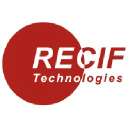 Robots Recif Technologies racheté par le singapourien Accuron Technologies - 23/01/2024
Robots Recif Technologies racheté par le singapourien Accuron Technologies - 23/01/2024
 Universal Robots montre ses muscles - 10/01/2024
Universal Robots montre ses muscles - 10/01/2024
 Sterela vend ses stations de météo au Koweït - 14/12/2023
Sterela vend ses stations de météo au Koweït - 14/12/2023
 Scallog, le petit poucet français des robots logistiques - 12/12/2023
Scallog, le petit poucet français des robots logistiques - 12/12/2023
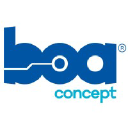 Boa Concept finance sa croissance externe et son internationalisation grâce à la Bourse - 04/12/2023
Boa Concept finance sa croissance externe et son internationalisation grâce à la Bourse - 04/12/2023
 Naïo Technologies augmente sa production de robots agricoles autonomes - 20/11/2023
Naïo Technologies augmente sa production de robots agricoles autonomes - 20/11/2023


